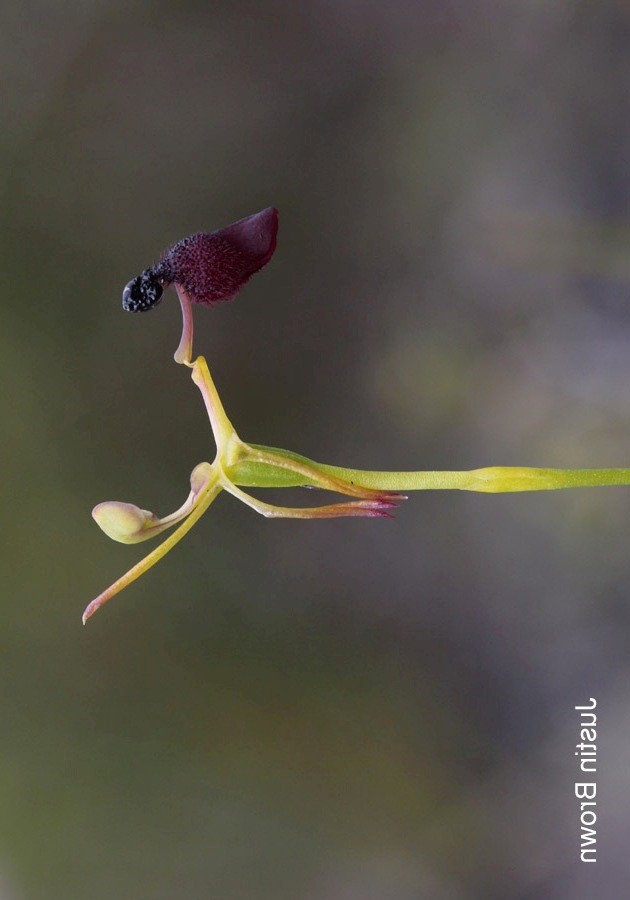Late hammer orchid
(Drakaea confluens)

Description
Drakaea confluens, commonly known as late hammer orchid is a species of orchid endemic to the south–west of Western Australia. It is similar to other hammer orchids in that it is pollinated by a single species of male thynnid wasp using sexual deception. The orchid's labellum is similar in shape and scent to a specific species of flightless female thynnid wasp. The species was discovered and collected in 1930 but was not formally described until 2007. It is only known from three areas in the south of the state and has been declared "endangered" by the Australian government and "threatened" by the Government of Western Australia. Late hammer orchid is similar to others in the genus in that it has a single, ground hugging leaf and an underground tuber. In this case, the leaf is heart shaped, about 20 millimetres (0.8 in) in diameter, dull blue-grey in colour with darker green lines and distinct veins visible on the upper surface. There are also minute raised lumps over its surface. The stem is 15–30 centimetres (6–10 in) long and the stalk of the single flower is 10–12 millimetres (0.4–0.5 in) long. Its flower is also similar to those of other hammer orchids in that the labellum resembles a flightless female thynnid wasp however it can be distinguished by colouration of the labellum. The "head" and part of the "abdomen" of the insect-like labellum are light green with darker spots while the end of the "abdomen" is a dark maroon colour. The sepal at the back of the flower, the two at the sides and the petals are all 9–11 millimetres (0.35–0.43 in) long. The head-like top of the labellum is distinctly hairy and has two dark-coloured lumps at its base. Flowers appear from September to November, depending to a certain extent on location.
Taxonomic tree:







